Analog Horror: Analyzing an Eerily Nostalgic Genre
Analog horror is a broad, and sometimes confusing definition for a genre that has recently bloomed mainly on YouTube. But how do we define analog horror? Analog horror is defined by two halves that have to interlink for the story to be effective. The first half of the definition is the vessel for the story. The vessel where the story comes through is always on some sort of analog device, audio tapes, VHS recordings, handheld low quality cameras, etc. The quality of the video and audio is distorted to the style of these devices, and this affects the mood and the atmosphere of a lot of analog horror media.
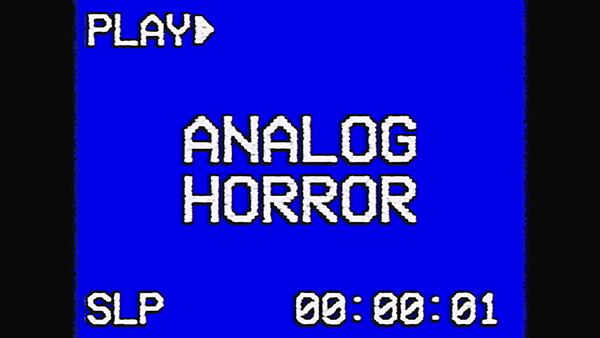
The second half, however, is the crux of the horror. The power of analog horror, in my opinion, is the omnipresent corruption of one of human being’s most powerful emotions: nostalgia.
The Breach
The horror genre revels in exploring things that disturb and terrify the universal human subconscious. One of the core tenants of this universal horror style is to twist the familiar and comfortable into the unsafe and horrifying. The most common iteration of this trope is the classic home invasion narrative. The home, and specifically the bedroom is a place of security, privacy, and familiarity. When someone invades this space, it provides a universal horror. Some examples include Friday the 13th, Psycho, and many many more. Nightmare on Elm Street takes this to the next level, invading the characters at their most vulnerable, their sleep.
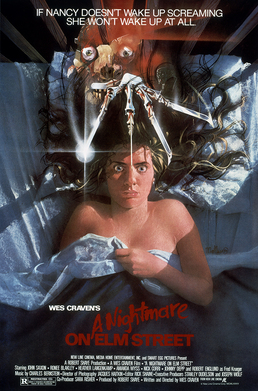
Analog horror stories also work on this general level of horror. The Mandela Catalog is a YouTube analog horror series that became popular in 2021. It is an anthology series about several deaths and disappearances in the city of Mandela County. The series specifically deals with supernatural threats invading your home through your television, twisted replicas of family of friends luring victims to their deaths in their own house. Even the safety net of the police is undermined with an order for police to lie to callers; telling them help is on the way when no help is coming. The Mandela Catalog strips the safety net off all of its characters and the constant feeling of danger throughout the story is a testament to the efficacy of this tenant. However, this invasion isn’t the literal stripping of safety nets like in these other works. It is an invasion more insidious and much more personal. What happens then when a medium of horror specializes in invading your own sense of safety? Not the characters in the story, but you the watcher. Analog horror in its purest form Breaches the watchers mind.
The Turn
A common analog horror trope that is extremely effective is what we will simply call the Turn. Analog horror is normally conveyed in short videos or audio clips and a common tactic with these short videos is to have a portion of the video be normal and at one point in the video the Turn will come and the element of horror for that video will be introduced. Popular analog horror video BLUE_CHANNEL: THALASIN is a commercial on the fictional and titular Blue Channel. The commercial is for a new drug that can reportedly helps you experience regular emotions for those that have gone through emotional degradation.

While the first two minutes of the video aren’t completely horror free, with just the idea of emotional degradation and a drug to substitute these lost emotions being pretty terrifying on its own. You sit there with nothing obviously wrong but you wait, helpless, and anxious for the dark reality of this commercial to reveal itself. The Turn comes around the two minute mark. The narrator switches to an enhanced version of the drug that can provide you with emotions that cannot normally be experienced by humans and at this moment where the narrator begins to explore the new emotions is when the turn happens.
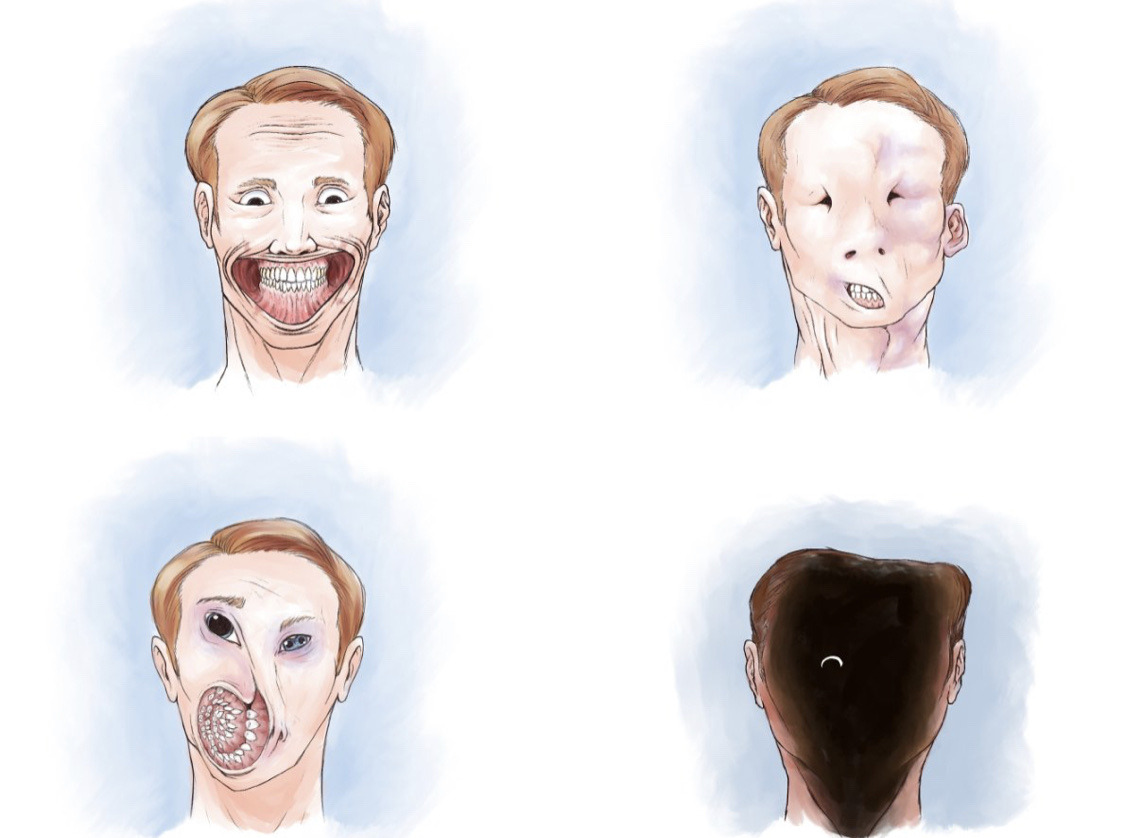
Another example of the Turn is in the first video of the series Gemini Home Entertainment: WORLD’S WEIRDEST ANIMALS. In this video the first chunk is about real animals without a trace of horror to be found. The Turn then occurs, the music cuts out, and the video introduces the Woodcrawler, a horrifying creature that the video shows can be found everywhere. The purpose of the Turn is to take advantage of our own minds, implementing the Breach of safety in our own brains.
The Weapon of Nostalgia
So how does analog horror use these elements against us? Before the turn what is the video portraying? Why is this buildup of usually useless information still gripping to watch? Why is the subversion of the Turn so horrifying, even when no jump scares are involved? It all comes back to the weapon of nostalgia. Before the Turn we have the familiar. A commercial you might have watched as a kid. An educational video you might have seen at school on a television they rolled out. A radio broadcast you weren’t paying attention to in the background of your breakfast before you hopped on the bus. The Turn Breaches our nostalgia the same way Freddy Krueger breaches dreams. Our childhood and our nostalgia is a safe place, a place of comfort and familiarity. You might sink into this when watching analog horror. The same visual distortion as the videos of your childhood, the same kind of music in the background of the news broadcast your Dad watched every morning before work. These comfortable spaces are then invaded. Breached. The Turn always strips this familiarity away and replaces it with its own horrible tale or monster, and we are afraid.
Analog Horror vs. Found Footage

A genre similar to analog horror is the genre of found footage. The Blair Witch Project, the pioneer of the found footage genre of horror, is a movie with a handheld camera and has a lot of the hallmarks of an analog horror series. So what’s the difference between these genres? In short, time. The Blair Witch Project was set in the present day of the time, 1999, and used a camera from that time. This movie didn’t capitalize on the nostalgia emphasis of analog horror because at the time of production, there was no nostalgia for this time period. The Blair Witch Project viewed now, over 20 years later does have this nostalgic element, but it was not created originally with that intent. The Blair Witch Project and other found footage movies/web series like Paranormal Activity, Marble Hornets, or Cloverfield have a sense of familiarity that they invoke with their style, but that present familiarity is different from nostalgia. Cloverfield has obviously found footage elements that are filmed with more modern hand held devices such as modern news cameras and mobile phones. When Cloverfield ages, it will also gain this nostalgic element, but it will never be analog horror.
Nostalgia and Age
Building off of that, analog horror changes with the target audience. Analog horror media made by people who grew up in the late 90’s or early 2000’s will capitalize on visuals that are nostalgic to that time period. The current fascination online with liminal spaces, The Backrooms, and their nostalgic effect is a good example of this. Bowling alleys we might have visited, empty shopping malls with the popular architecture of that time, etc. Analog horror pieces that focus on an older 1980’s/1990’s look can be scary to someone who hasn’t experienced that period, but the horror is especially effective if the analog horror media twists the nostalgia of your childhood specifically. Analog horror is versatile in the way that it can adhere to any time period so as to twist its intended audience’s mind.
Dive into Gemini Home Entertainment
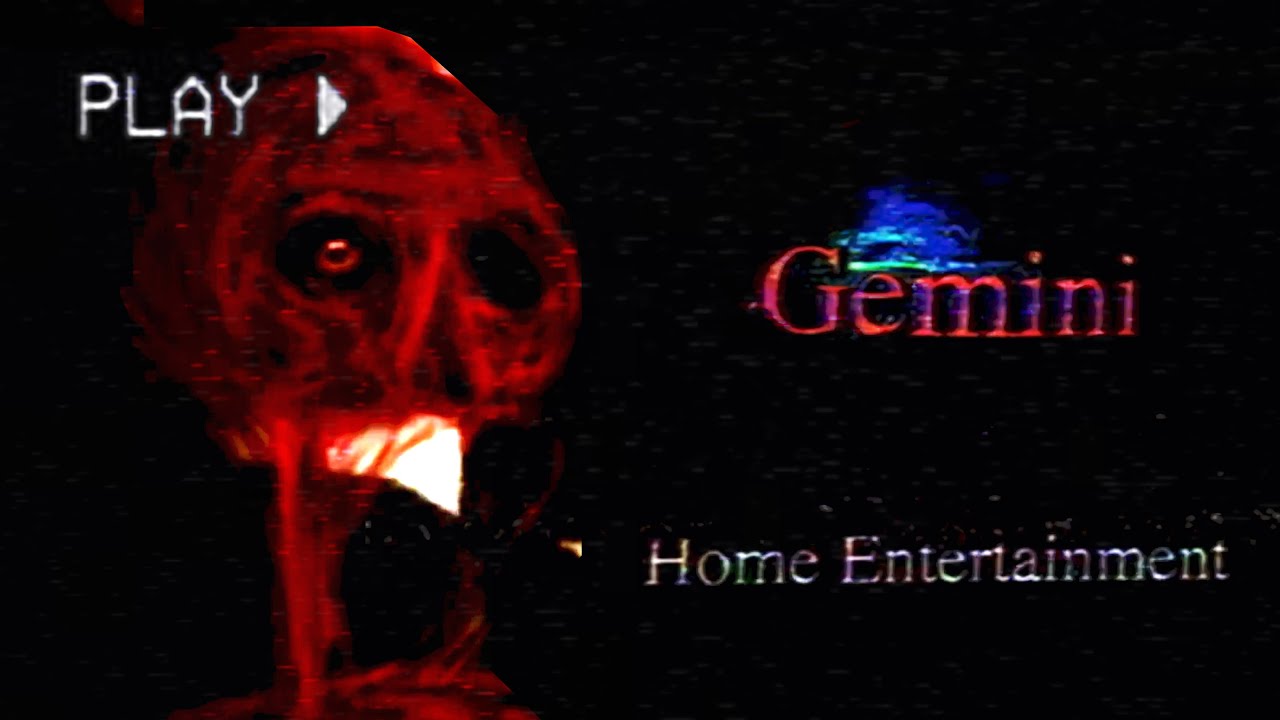
The popular YouTube series Gemini Home Entertainment is emblematic of these themes and tropes. The series spans over lots of different forms, including educational clips, commercials, public service announcements, home videos, and even a whole playable video game. They all fit in the style of the 1980s-1990s where the story of the analog horror series takes place. The entire story of Gemini Home Entertainment is invasion. Instead of going for a more specific invasion like Nightmare on Elm Street and sleep, Gemini expands it. In Gemini Home Entertainment, nothing is safe.
In Gemini Home Entertainment video: ADVANCED MINING VEHICLE, we see footage from a remote drone scouting through tight cave systems. After the video tells us all of the robot’s functions, we are left with the camera feed of the drone. On the drone’s screen we can see its depth gauge number rising as the drone crawls into the Earth. The cave system is strange, but we continue to progress further and further into the cave. What we see, hundreds of meters below the surface is terrifying.
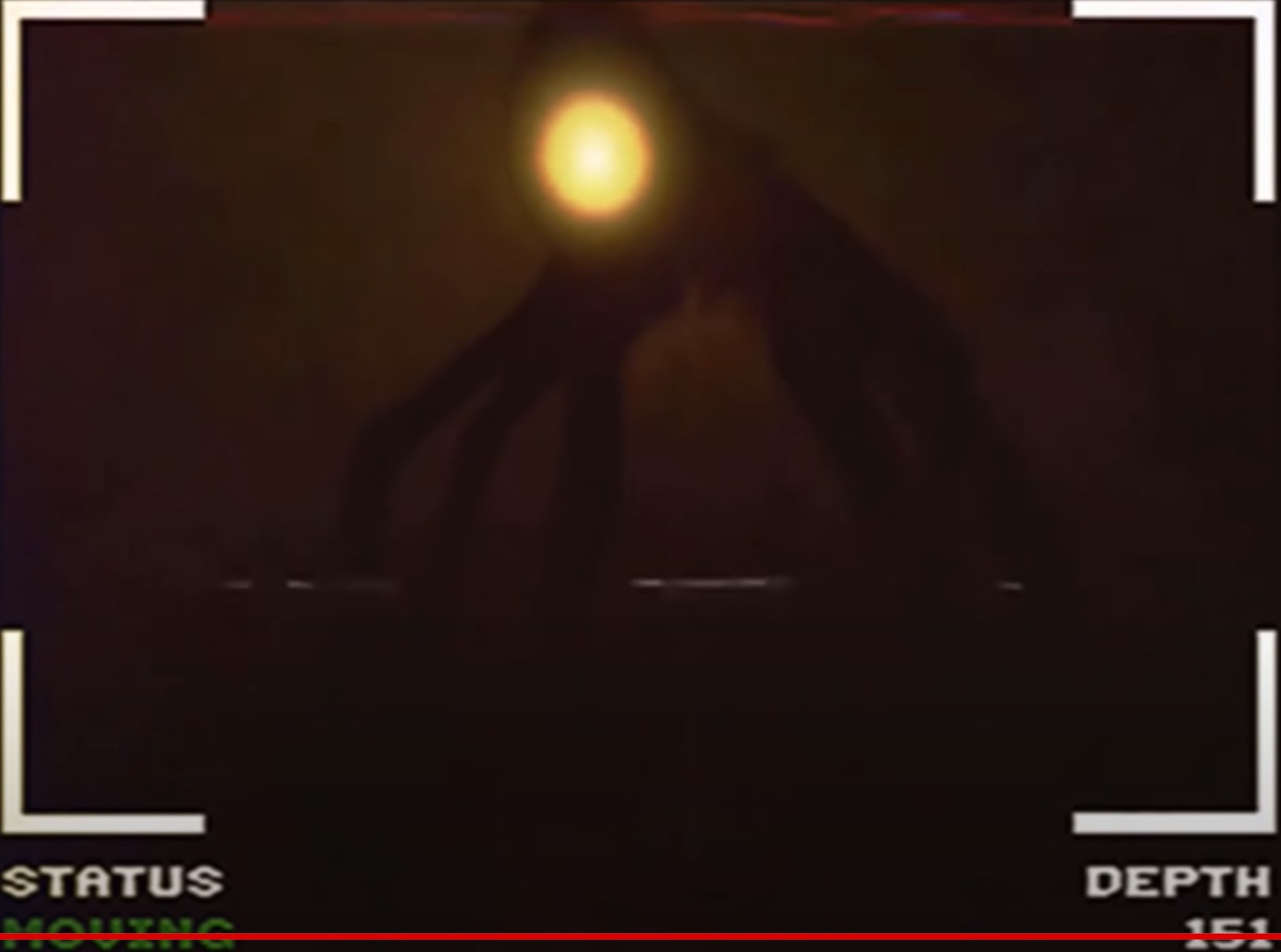
The Earth itself has been burrowed into. The drone focuses on the cave around it and we see an unusual organic look around the cave. It stops feeling like we are inside a cave and starts feeling like we are inside another entity. Tendons and veins cover the walls and we see a creature start to emerge from the cave. The camera feed of the drone is knocked out and the depth gauge number rises at a terrifying pace. 300 meters, 400 meters, the drone’s screen displays a status of ‘low signal’, 500 meters, and we lose contact with the drone. The video displays an ending message of thanks before the video ends.
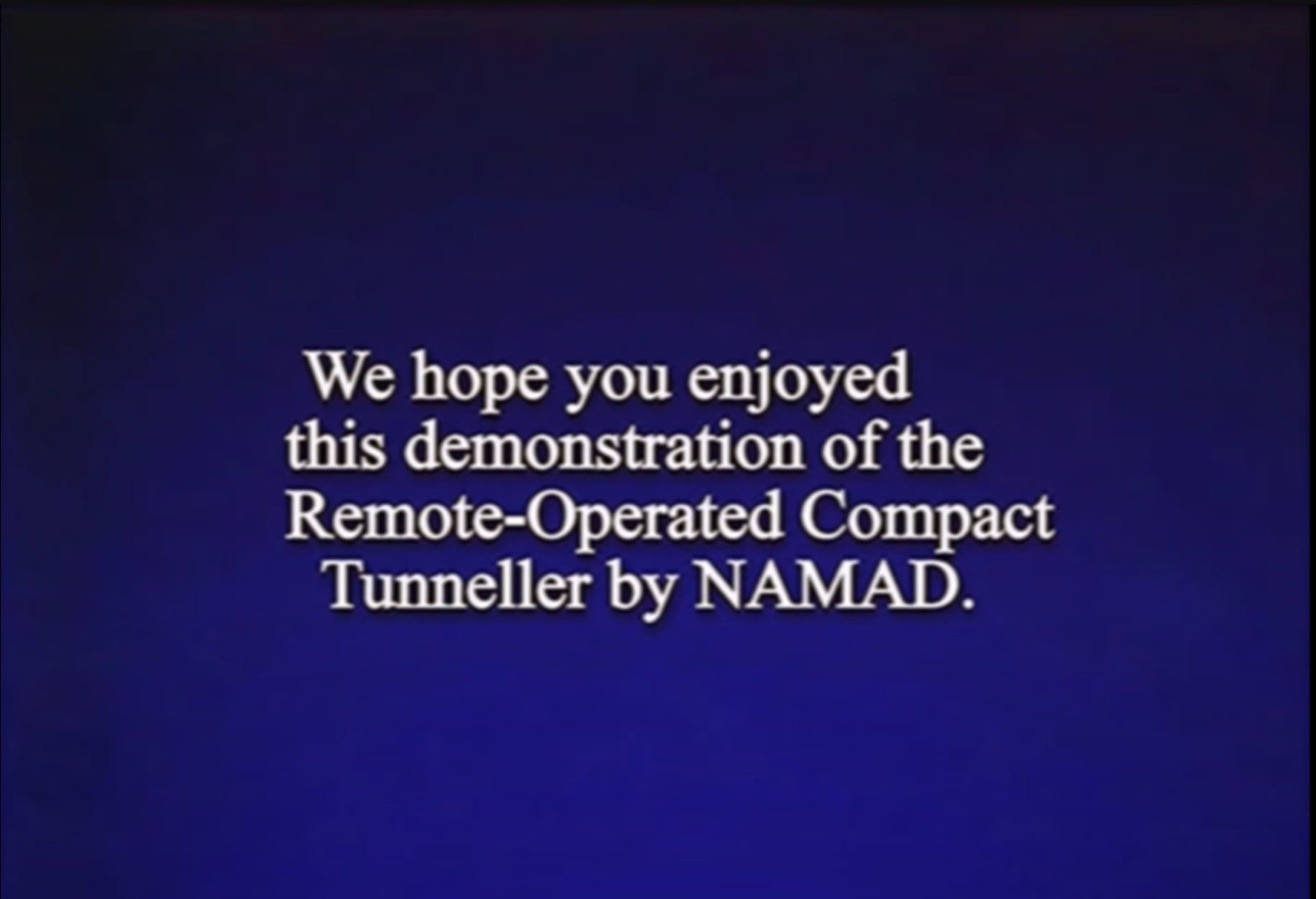
This video portrays all of the themes we have talked about so far. The video before the Turn could pass as an 80’s era technology demonstration and the music and visuals support that. The Turn and the Breach happen at once. Our nostalgia is subverted when the video focuses on this eldritch creature, we realize that in this series, nothing is safe, even our own planet is Breached. This is what makes analog horror terrifying to us watchers. The Turn of the narrative, the Breach of our nostalgia, and how these tropes work together with interesting stories to create horror that captivates millions.
What do you think? Leave a comment.
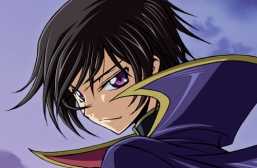
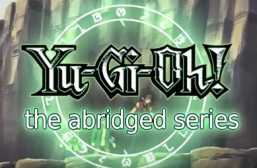
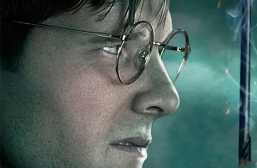


Analog horror is definitely an interesting topic, and I’m glad to see an article on it. Good stuff!
I think another thing worth noting about the old-style cameras used for found footage and analog horror is that because the visuals are less ‘crisp’ and distinct, viewers can’t always see things clearly and this adds to the horror. With analog horror, it can be hard to tell if that indistinct shape on the camera was a horrifying monster, a person, or simply a visual glitch – adding to the tension felt by the viewer. If you use a crisp, modern camera, it can be harder to get this indistinct blurriness. Similar goes for ‘weird noises’ in analog horror works using older recording devices, which once again are very uncertain – is that spooky noise an audio glitch, or a monster? It definitely sets analog horror apart from other styles of horror media made today, where they use clean and crisp visuals and sounds and as such need to work harder to make them especially horrifying.
As someone who likes a bit of analog horror, I’m definitely interested in seeing how this genre evolves in the future, and to what the analog horror based off of the technology of today will look like.
Analog horror is a gateway to video content creation learning. 🤓
I’ve been trying it for a while now and it’s amazing how much time you can put into slipping small details between two frames to create your own little subtext.
If you’ve ever wanted to do SCP animation, backroom videos, etc. without finding your style, try your own analog horror!
I like analogue horror cause it is kinda like weirdcore.
The Blaire witch project is one of the first “analog” horror projects, but it’s also very different. My mom knew one of the actors in the original. The actors were literally given cameras and some supplies, brought into the woods by the directors, and left there. A lot of their reactions were genuine. The directors would come and bang on the tent, without them knowing what it was. They would be left notes, like to throw their map into the river. The main point is, except for the beginning and end, none of it was scripted. It was the first analog horror, but it was also something extremely different, and I want that to be known.
My go-to for analogue horror is SCP, in the sense that everything is treated as per procedure (until everything went wrong of course lmao).
Analog horror is the antithesis of nostalgia and I think that’s why it strikes us all so hard.
i think what makes analog horror work is the normalcy of an unsettling topic.
mandela catalog shows you this terrifying concept of people who look just like you and who want to kill you in a psa form like they’d show the general public. it’s just… normal. this terrifying this is normal here. but not for the viewer.
Same with the thallasin. Emotions deteriorating affects 7/10 people in the world of that commercial. And that’s a scary concept. Even scarier when they push the concept further, exploring messing with the brain to control and recreate them.
Spoilers for it obviously, and I can’t remember the name of the movie, but it’s exactly a long the lines of this “analog” idea of being too real. It’s about this girl who gets famous doing cam streams, and becomes a massive creator on the site, but one day she sees herself online while she’s obviously not, but figures it’s just someone reuploading her old content. She realizes that she’s never made a stream like this though, that this girl just actually looks exactly like her, only to then find herself locked out of her actual account by the someone who looks exactly like her. She starts to figure things out though when she realizes that the most popular girl on the site had actually died years ago! She then uses masks, and works herself all the way up to being popular again so she can do a co stream with “herself”.
Obviously the other, and chat are freaking out over the reveal, but the best part is when she starts smashing her head on the table, nose bleeding, huge bruises…And the other her starts to glitch out each time, and copies her new injuries as they happened. Turns out the site was using an AI to copy it’s most popular creators in order to either keep them live forever like the girl who passed, or so the site made more money without having to actually pay anyone for anything. It is so downright disturbing, and the twist is a full out of left field thing, because they set it up to be more like “evil twin” or “supernatural being”, but nope. It’s just AI doing as AI does.
I think this movie is called “Cam”. Spooky watch!
Fans of analog horror, check out digital horror! stuff like brandonworks and the june archive are, i think, very good starts at successors to analog horror.
It is the uncanny valley! You know something is wrong, but you don’t know why or what it means. Or it’s a twisting of the familiar.
Analog horror is somewhat built for that effect. Because analog tech has limited quality, it makes the details are obscured and unclear, leaving you in the dark.
Gemini Home Entertainment? I ain’t sure if it counts as analogue horror but it’s kinda the vibe I think. Very subtle series.
“Analog horror in its purest form Breaches the watchers mind.”
I am just finding out about this genre! It seems very interesting. The main thing I love with these types of mediums is how they bleed through the story into the real world: thus creating feelings of terror. The idea that the object you are watching, is actually not fiction, or purely entertainment, but is actually interacting in the real world is fascinating. It is one of the reasons I love Cloverfield – I enjoyed the viewing experience, yes, but what I really enjoyed was all the other media produced surrounding it e.g. websites, videos etc that make it seem the events and entities in the movie actually exist in the real world as the website that was created for Cloverfield is portrayed as realistic as possible.
I think another decent reach into the (digital) analog horror is the lifeline games. Where it’s just all messages sent by a random transmission. someone needs help, but you can’t do anything other than help them survive. Even if that, where you just sit back as something happens getting details about everything that’s happening in the transmissions, no video, no audio. Just the transmissions.
If you all haven’t heard of walten files (analog animatronic horror) here’s a funfact: the creator animates, and draws all characters in phone. I highly recommend it.
I didn’t know this! Love the series, definitely on of my favorites.
I’ve been watching way too much horror related things. I’m sitting on my loft bed, eating my McDonald’s, I look up and my reflection on my fan scared the shit out of me. I thought it was an alternate because it looked to deformed.
If you want actually really scary analogue horror then watch walten files, it gave me nightmares for months.
As I kept watching reading this article I feel inspired to make my own analog horror. I’m not good at making footages but I can be good at making art since im a DA user but If i wanted to make one myself, I might need to know much from what other’s did for their analog horror that became a good series.
Mandala catalogue is genuinely some of the creepiest shit out there once you understand what’s going on.
I don’t know what attracts me to these videos. They’re freaky and i always watch them when I’m alone at night even though I already a paranoid person.
“Analog Horror”… just another name for weird games and web videos.
Every adult was born in the analog era. Nostalgia exists.
I feel like one of the things a lot of analog horror productions overdo is the “advise viewer to do something blatantly contrary to what would be expected”.
Sadly, true. At a certain point, the cliche gets to the point where you expect it to happen. You expect the subversion to occur, you expect the bad advice to be given. Stuff you expect isn’t scary.
Yeah this is a valid complaint. I think Local 58 did it best.
I feel like a lot of people doing horror don’t necessarily realize that most things are scariest the first time you see them and they get less and less impactful each time they’re done, especially when they’re executed in a very bare bones pastiche of something else. People love to copy things (PT, FNAF, and now analog horror) but the copies are almost never as good as the originals unless they mutate enough to become their own thing. Even FNAF used increasingly different gameplay formulas in each game to avoid that staleness, to the point where FNAF 4, Sister Location, and Simulator don’t even utilize the camera systems the game became famous for. Because if it had just kept being FNAF but in a new building each time, it would’ve gotten boring.
Horror and scares thrive on novelty, you really have to do something new with your ideas, as much as you can.
I remember seeing one analysis that posited that a lot of the best horror games are short for that reason – the longer it is, the more likely the horrors will lose their impact. Varying things up (in later stages of the game or in sequels) can definitely help prevent this as you’ve said.
The problem with a lot of analog horror is that there’s too much telling and not enough showing. Imagine hearing about aliens… or seeing them. Which one is gonna be scarier? And when it comes to this genre, information is a valuable thing that needs to be rationed out to your audience. If the Mandela Catalogue just… put everything he wanted you to know in a random instructional video, it would not be nearly as scary. But it branches. It shows how horrifying, with different formats, and different characters. News broadcasts, recorded phone calls, video footage of these experiences. Alone, these aren’t really all that scary, but with the right content, and putting them together in a cohesive way, you can just let the audience figure out that TV man is kidnapping children. Showing > Telling.
I think any horror works best when there isnt any characters reacting to the threat. It makes you feel more isolated and alone. However in some cases reaction is neccesary. Like if the character is viewing or hearing someone freaking out at a threat to keep the veiwer/player on thier toes.
I feel like the main reason Analogue Horror is ACTUALLY SCARY is the lack of context in face of such fear, You know theres something unnatural, or uncanny, or completely unknowing to you out there or possibly in your house and or taking place somewhere else in the world but you have no way of knowing how to combat it from the lack of pure context.
Would found footage series such as The Backrooms be considered Analog Horror?
Depends! Some are more on the digital horror side which draws more from recent nostalgia, but Kane Pixel’s The Backroom series definitely falls more into the analogue horror camp.
the thing that scares me and others most about analog horror is that it takes nostalgic stuff or stuff that exists in the real world, and mixes it in with things that arent real. this causes people to think that it could be real because it features things like vhs tapes, infomercials, and old versions of television sets. it seems so real. which makes it so unsettling
It kinda makes sense that analogue horror became more popular through 2020, because the limitations of covid meant that analogue horror could be created because it can be made at home by yourself if needed. This time was also perfect for creation of analogue horror because people wanted to be distracted from their real lives.
in 1953 there was a movie called War of the Worlds. it was, in a way, the first analogue horror. People actually thouth the broadcast of that film was real and the news stations blew up with concerened phone calls.
I think one of the reasons analog horror works very well is because, since the medium is grainy analog video, it makes things seem unreal and distant…but they’re not, or at least they weren’t for the generations who grew up on analog media. just the medium is another thin, but effective, layer of unease.
My personal favorite analogue horror has to be the monument mythos/nixonverse. It just does everything right. It uses mediums that most people are familiar with to show things that shouldn’t exist, and it goes even farther beyond that because the things it presents aren’t just straight up monsters. It’s monuments. Icons of America that nearly anyone living there can recognize, but twisted into something horrific
Analog Horror becomes even scarier when you cannot find definitive proof that it cannot or has not happened…
Gemini Home entertainment or the walten files are my favorites.
I think something like We’re all going to the World’s Fair could be considered to be an offshoot of analog horror. While it certainly is presented in a much more professional way, and is a theatrically released film instead of a Youtube video, I still think that it definitely fits into that category. The breach is not a tangible thing but is instead a sort of manipulation of the main character simply through the internet’s influence.
Analog horror is so cool and creepy. For me, its probably a mixture of uncanny valley and that possibility of it being true in some messed up universe that luckily isn’t this one.
I can personally recommend gemini home entertainment, the monument mythos, the walten files and the backrooms from kane pixels (i havent watched backrooms stuff from other creators so i dont know how good they are) if theres hunger for more.
I agree; it’s the uncanny that makes Analog horror so unsettling. In terms of nostalgia, it looks like many of our childhoods, but then it distorts it–almost like an attack on our own memories. It’s like it highlights how vulnerable and fallible our memories are, and that uncertainty of our understanding of our own lives can be disruptive and upsetting.
All amazing recommendations! The monument mythos is a series I still have to finish so thanks for the reminder haha.
I feel like no horror media that isn’t straight up real life isn’t really scary to me anymore. Obviously, jumpscares can still be startling if done right but other than that only realistic things still scare me whether it be actual stories or things that mess with you personally.
I mostly agree with you, but I’m not sure horror is supposed to scare you. I think that’s why most “horror” movies fall flat–they’re trying to scare. All they have to accomplish that goal is jump scares, and that’s affective in the simplest sense: it triggers a bodily reaction. I think real horror is more insidious and disruptive; it lingers in the mind somewhere closer to disgust. Like, I’m scared of a bear, but I’m horrified by depravity, real or imagined.
Interesting analysis as to why analog horror works so well.
As far as I know, one of the original scripted web series on YouTube, lonelygirl15, could fit the analog horror genre. As a classic vlog-style video series, it has become nostalgic the same way the horror classics like Halloween are nostalgic.